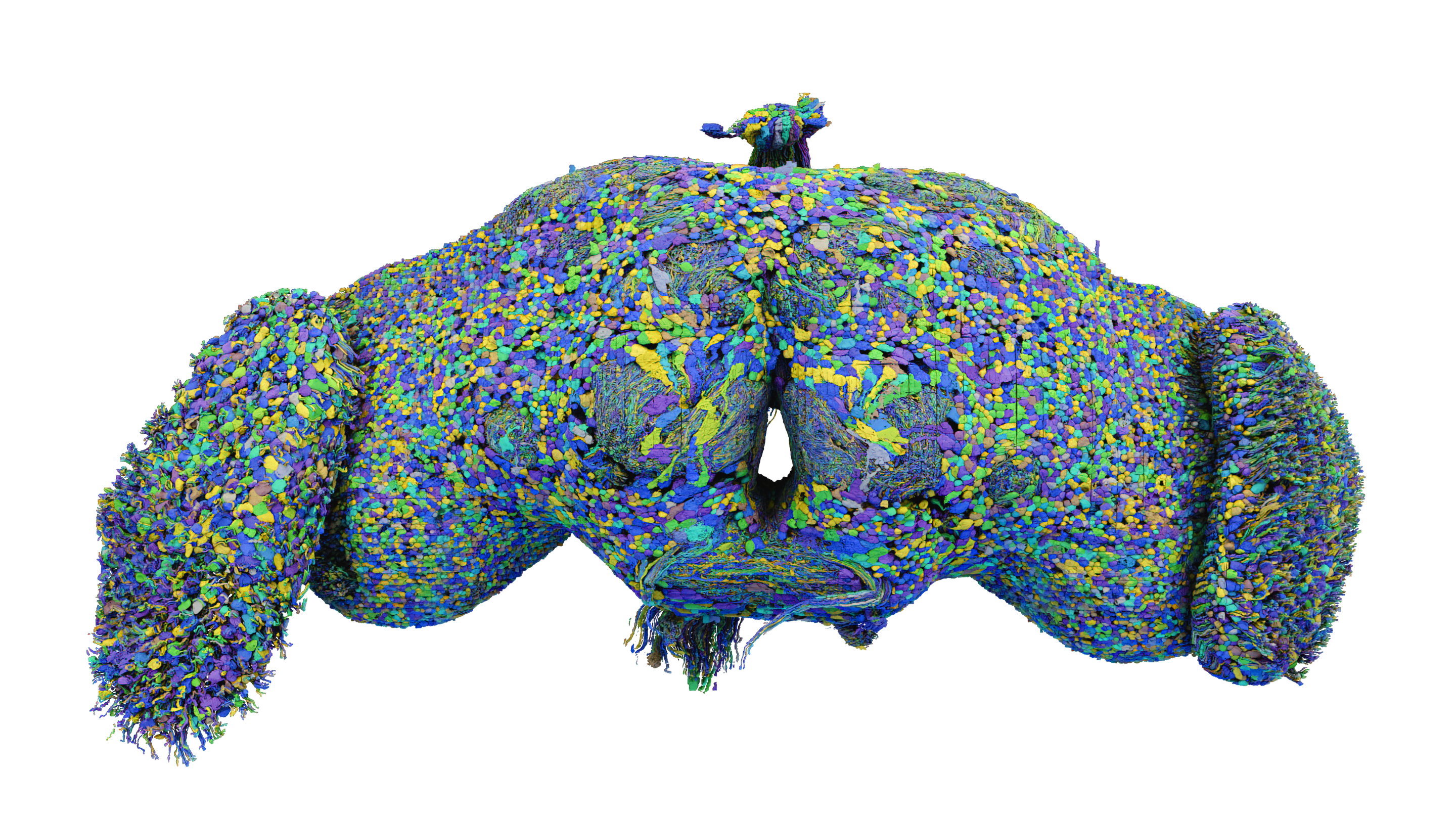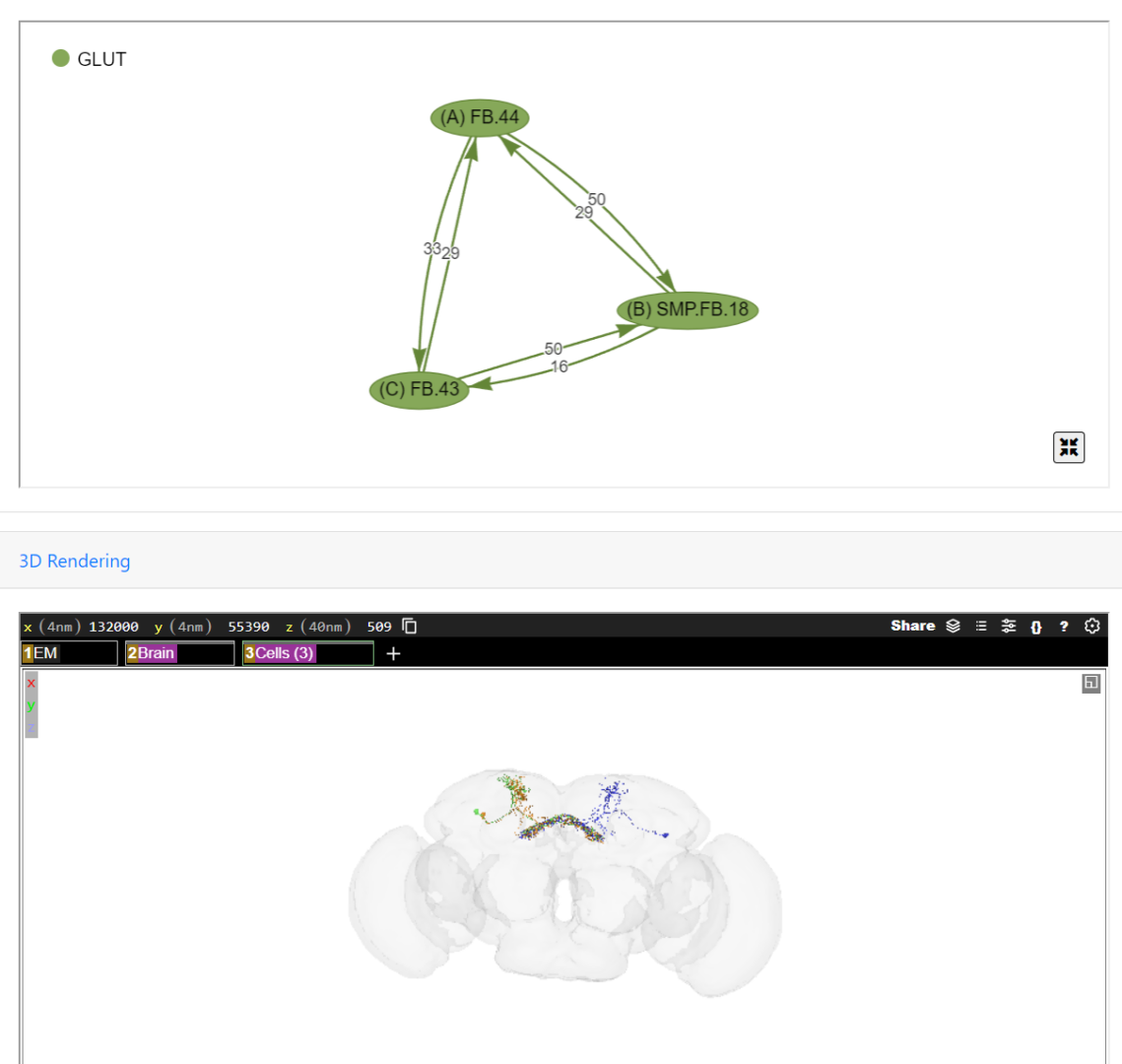
It’s officially the start of the fall and winter holidays here in the northern hemisphere. Time to break out the hot drinks and relax by the warmth of the computer while you do a little connectome exploration. It’s been a while since we updated the blog (and we’ll try to do this more frequently).ere is what’s happening at FlyWire HQ.
Preprints
The flagship publication that makes public the FlyWire whole brain connectome is up on bioRxiv. This paper is under review alongside the following manuscripts that together compromise the FlyWire Paper Package. Look for it in a journal family in 2024.
Flagship paper: Neuronal wiring diagram of an adult brain. Dorkenwald et. al. 2023
Proofreading Progress
There are now 139,000 proofread neurons in the FlyWire Volume. 70% of these cells have been annotated.
Codex Updates
Codex, the Connectome Data Explorer, has several new features, including:
- Motif Search
- Optic Lobe Catalog
- map root IDs
- New annotation categories:
- genes
- connectivity tags
- morphology clusters
- network connectivity tags on cell info page
- search filters that group cells by:
- common partners
- common partner cell type
- easier to find cells with similar connectivity
Have a new feature idea for Codex? Email us!

What’s Next
Now that the FAFB dataset is approaching completion, we’re preparing the next dataset. This volume is being referred to as The BANC, which stands for Brain and nerve cord. It was imaged by Wei Chung Lee’s group at Harvard University. Internal testing is underway and we expect to begin public proofreading soon after the new year.

Here’s wishing you a happy holiday season!
The FlyWire Team at Princeton University

PS: for some light reading, check out the list of publications using the fly connectome:
- Neuronal wiring diagram of an adult brain. Dorkenwald et al. bioRxiv 2023
- Whole-brain annotation and multi-connectome cell typing quantifies circuit stereotypy in Drosophila. Schlegel et al. bioRxiv 2023
- Neuronal “parts list” and wiring diagram for a visual system. Matsliah et al. bioRxiv 2023
- Overlap and divergence of neural circuits mediating distinct behavioral responses to sugar. Jacobs et al. bioRxiv 2023
- Synaptic and peptidergic connectomes of the Drosophila circadian clock. Reinhard et al. bioRxiv 2023
- Neuronal correlates of time integration into memories. Frantzmann et al. bioRxiv 2023
- Networks of descending neurons transform command-like signals into population-based behavioral control. Braun et al. bioRxiv 2023
- Descending control and regulation of spontaneous flight turns in Drosophila. Ros et al. bioRxiv 2023
- A leaky integrate-and-fire computational model based on the connectome of the entire adult Drosophila brain reveals insights into sensorimotor processing. Shiu et al. bioRxiv 2023
- Hunger- and thirst-sensing neurons modulate a neuroendocrine network to coordinate sugar and water ingestion. González-Segarra et al. bioRxiv 2023
- Disynaptic inhibition shapes tuning of OFF-motion detectors in Drosophila. Braun et al. Current Biology 2023
- Hue selectivity from recurrent circuitry in Drosophila. Christenson et al. bioRxiv 2023
- Neurotransmitter Classification from Electron Microscopy Images at Synaptic Sites in Drosophila Melanogaster. Eckstein et al. bioRxiv 2023
- Visual Feedback Neurons Fine-Tune Drosophila Male Courtship via GABA-Mediated Inhibition. Mabuchi et al. bioRxiv 2023
- Somatotopic organization among parallel sensory pathways that promote a grooming sequence in Drosophila. Eichler et al. eLife 2023
- Neural network organization for courtship-song feature detection in Drosophila. Baker et al. Current Biology 2023
- Eye structure shapes neuron function in Drosophila motion vision. Zhao et al. bioRxiv 2022
- Structured sampling of olfactory input by the fly mushroom body. Zheng et al. Current Biology 2022
- Taste quality and hunger interactions in a feeding sensorimotor circuit. Shiu et al. eLife 2022
- Mating-driven variability in olfactory local interneuron wiring. Chou et al. Science Advances 2022
- Olfactory stimuli and moonwalker SEZ neurons can drive backward locomotion in Drosophila. Israel et al. Current Biology 2022
- Chemoreceptor co-expression in Drosophila melanogaster olfactory neurons. Task et al. eLife 2022
- Synaptic targets of photoreceptors specialized to detect color and skylight polarization in Drosophila. Kind et al. eLife 2021
- Classification and genetic targeting of cell types in the primary taste and premotor center of the adult Drosophila brain. Sterne et al. eLife 2021
- Information flow, cell types and stereotypy in a full olfactory connectome. Schlegel et al. eLife 2021
- The neural basis for a persistent internal state in Drosophila females. Deutsch et al. eLife 2020 (2022)